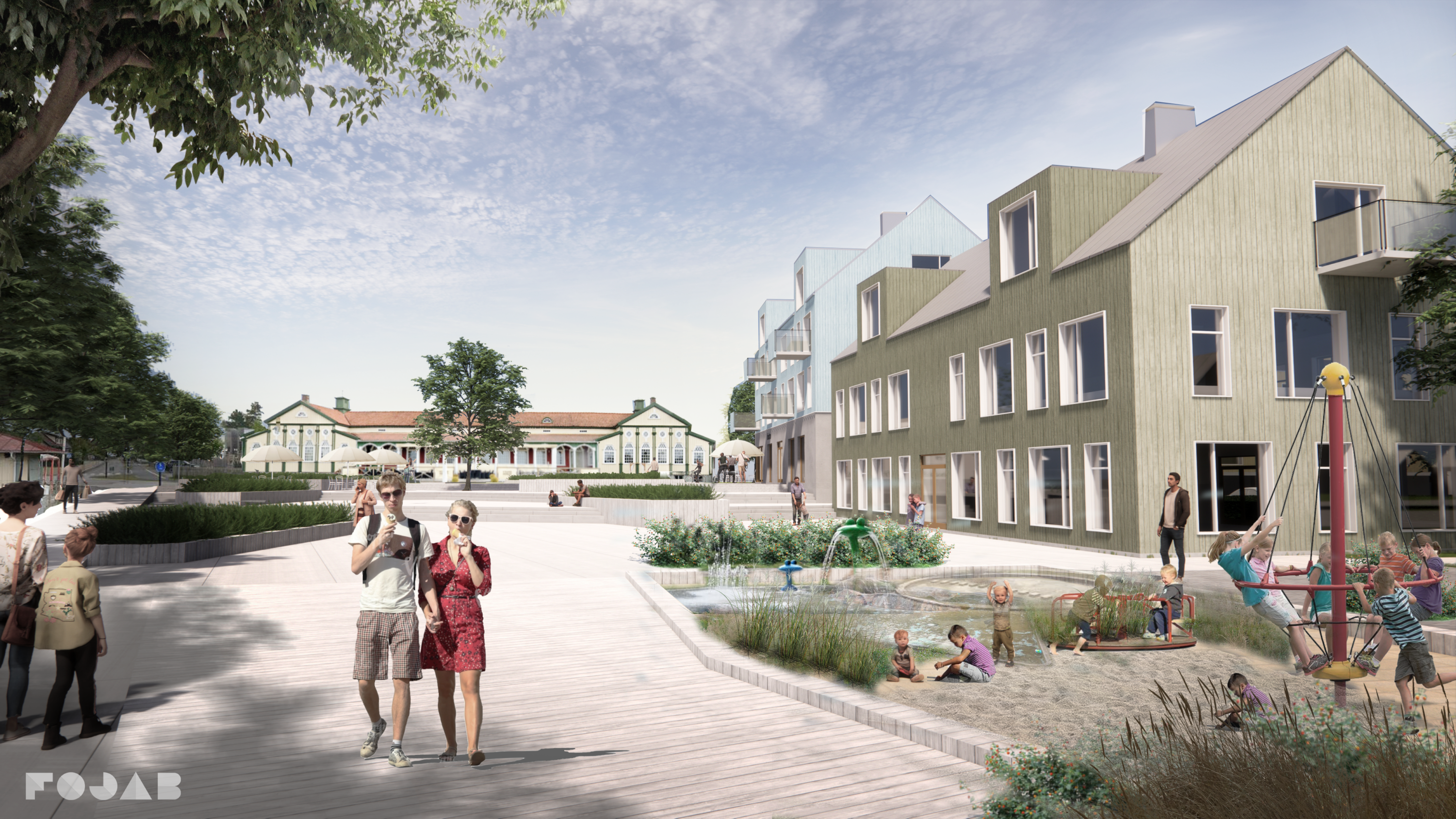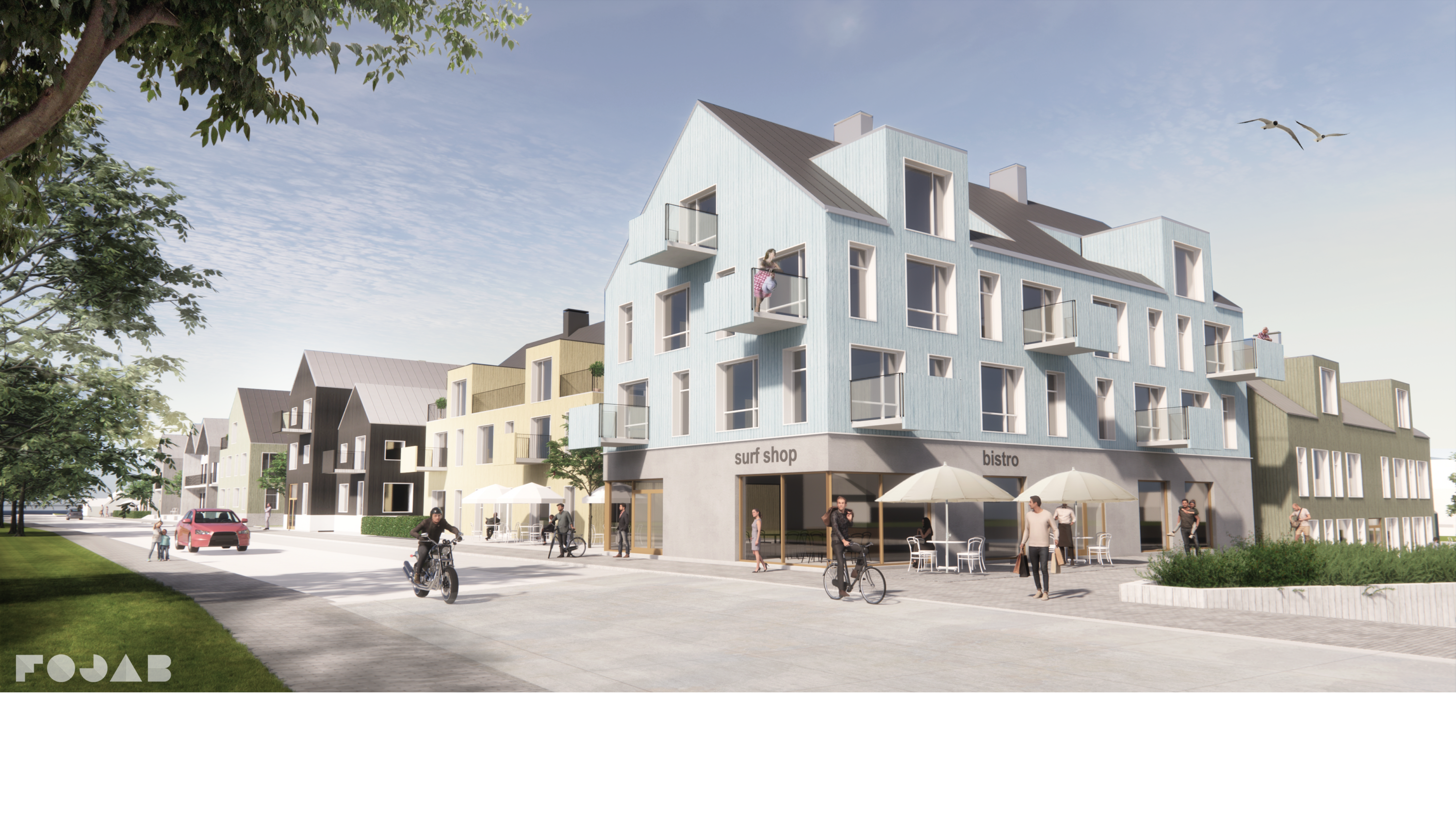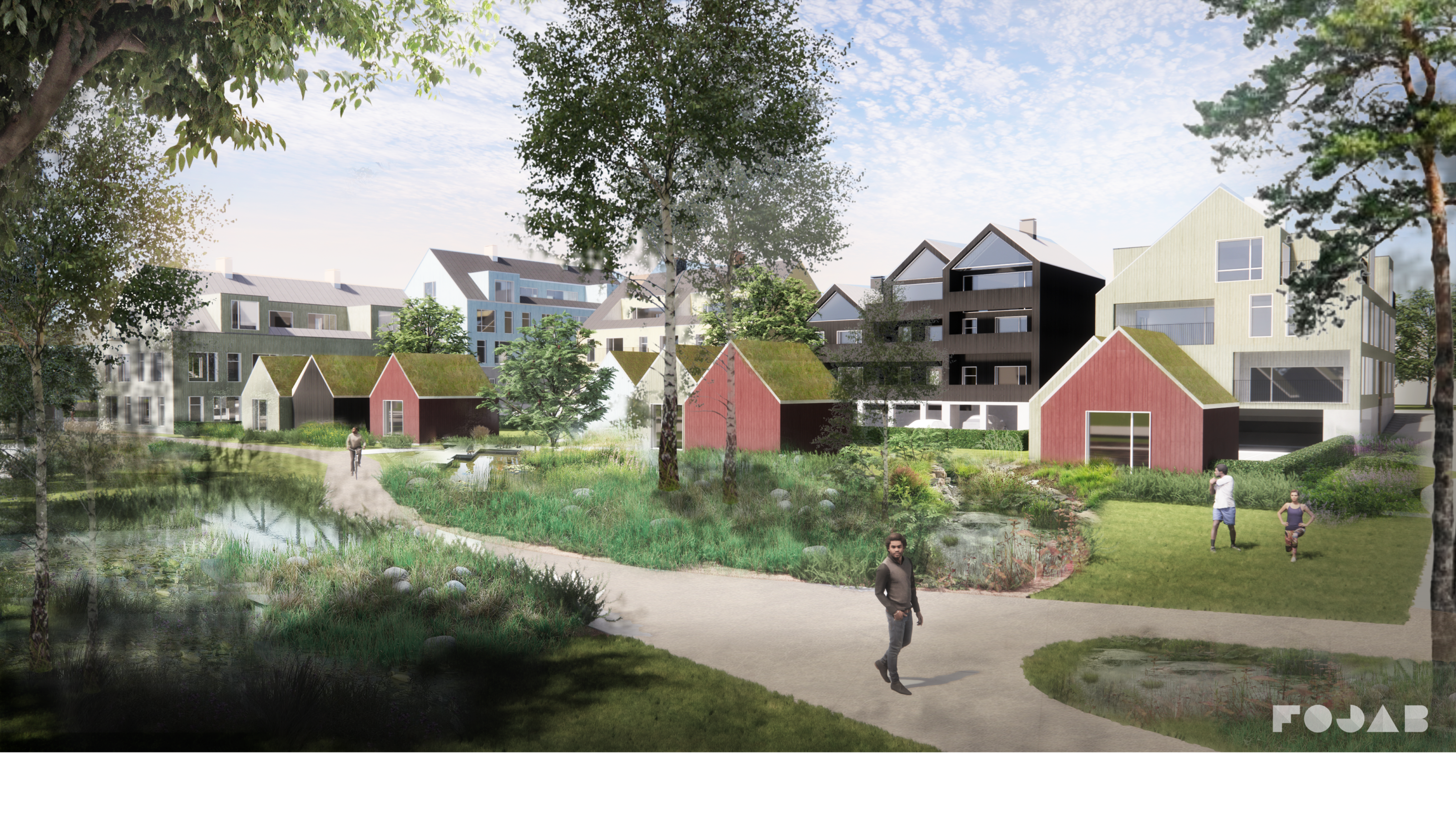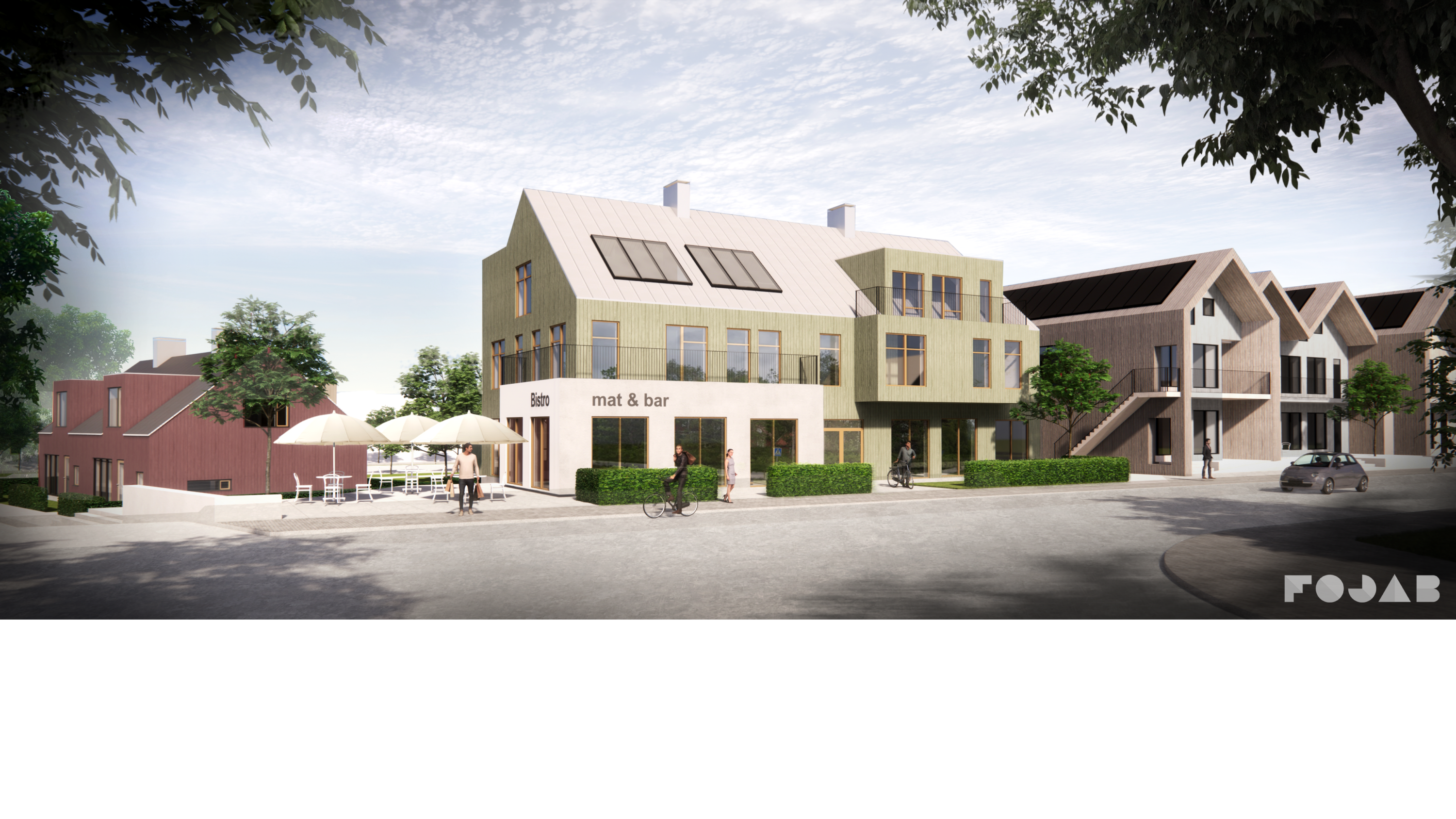2021-05-12
FOJAB puts Mellbystrand on the map
With high architectural qualities and strong sustainability elements that contribute to community development, FOJAB won the land allocation competition for Mellbystrand's center. The proposal connects to the history of the town and breathes joy and playfulness in both volumes and color scheme.
- We want to bring out the summer feeling all year round," says architect Anders Lundin.
Mellbystrand in Halland was once a thriving seaside resort. The community is built around holiday homes from the turn of the century, with Strandhotellet from 1927 as the social center. But Mellbystrand has recently lost service functions and visitors to neighboring towns and the center is largely undeveloped today.
In 2020, Laholm municipality announced a land allocation competition with a focus on increasing long-term attractiveness and creating environments that add value to the community. The proposal from FOJAB arkitekter and Hamiltone Fastigheter AB received the highest score for both sustainability and design.
- This has been requested for a long time and will lift Mellbystrand back to what it once was, in terms of attractiveness and reputation. New types of housing make it possible for more people to settle in beautiful Mellbystrand, which is very positive," says Mikael Lennung, land and development strategist in Laholm Municipality.
- It's too often said that something is unique, but it's very unusual to be involved in shaping a completely new city center structure. It has been inspiring to work with FOJAB to identify what once set the tone for the site and what can become the new Mellbystrand," says Elijah Hamilton, client and contractor.
FOJAB's proposal Strandparken is based on Mellbystrand's identity as a seaside resort with small-scale detached buildings. The neighborhood is well connected but has a broken structure with offsets towards the main street that provide space for outdoor seating and meeting places. The houses vary in height, volume and color - a playful wooden architecture in a color scale that associates both with history and with summer, sun and sea.
- We were inspired by coastal communities in Denmark and on the west coast to bring out the lively, cheerful and varied character," says Anders Lundin, architect in charge at FOJAB.
Gaps between the houses create visual and physical links to the park below and provide a sense of alleyways as in older small coastal towns. An adjacent square becomes an important part of the connection between the beach, the old beach hotel and the park.
The idea of sustainability is consistent throughout Strandparken. The proposed materials - wooden facades and eco-concrete frames - are durable and hard-wearing, eco-labeled and preferably locally produced. The roofs are equipped with solar cells. Both housing and business premises are flexible for changing future needs. Social sustainability is strengthened by housing in different scales and designs that attract residents of different ages and economic conditions.
In small communal sheds, which mimic the design of the beach's bathing huts, there is space for workshops, greenhouses or bicycle storage, for example, creating opportunities for socializing, sharing and reuse. A path with a wetland for stormwater management makes the neighborhood resilient to potential flooding.
A land allocation agreement and detailed planning work are now pending. Construction is planned for 2023-2024, with occupancy in 2024.



